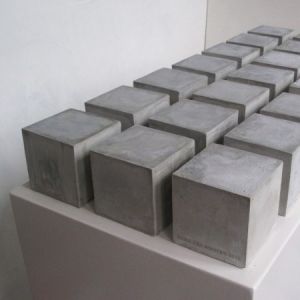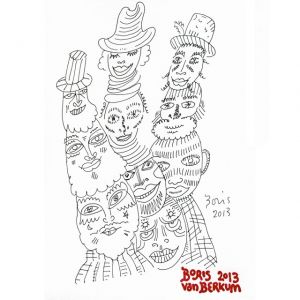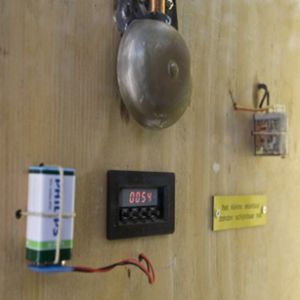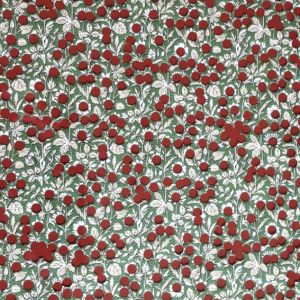Arno Coenen
A meeting of extremes is what Arno Coenen (1972) aims to achieve with his art. Coenen's images reveal refreshing similarities between things that are generally represented as separate and incompatible in contemporary media. A good example is Coenen's colourful tile mural ‘Oost, west, thuis best' (translates as ‘home is where the heart is'), which was acquired by Rijksmuseum Amsterdam, or his work for the new Markthal in Rotterdam (team Coenen : Arno Coenen, Iris Roskam, Michiel van Iperen, Frank aan de Stegge, Dustin Kershaw, Marinus de Ruiter, in collaboration with Winy Maas, Frank Hanswijk and produced by Mothership).
Coenen is fascinated with the rise of cultures coming from abroad, as well as developments in subcultures, youth culture and pop culture. His special interest lies with the more explosive subcultural phenomena, such as hooliganism, heavy metal and martial arts culture. Collaboration is a necessity of life to him. Coenen also works as a curator and organizer.
Pim Palsgraaf
The dichotomy between nature and industry, the organic and inorganic, is a fundamental aspect of Pim Palsgraaf's work. Palsgraaf's studio is located in Spaanse Polder, a desolate industrial area in the city of Rotterdam. This environment is integral to his art, as for him, it resonates both veneration and disdain.
In the "Multiscape" series, Palsgraaf examines the effects of architectural urban expansion through sculptural forms. The invasive qualities of this growth is apparent in his embedding of cityscapes into taxidermic animals. In this series, the often combative relationship between nature and culture is explored and even questioned by the viewer as the tumorous city seems to overcome the animal and bring it to its knees.
In his related series of paintings, Palsgraaf focuses on the perspective his sculptures cannot reach. In these clandestine interiors, the viewer discovers deserted rooms, damp corridors and ceilings in danger of sudden collapse. Revealing their decline, Palsgraaf's environments of men are slowly reclaimed by nature.
Hester Scheurwater
Hester Scheurwater (1971) studied monumental art at the Royal Academy of Fine Arts in The Hague. Under the guise of self-portraits, she investigates and critiques the role of women as a sex object. Photographs of herself posing before a mirror reflects both Scheurwater's inner thoughts and outward appearance. "The mirrored self-images are my way of reacting on the imitated and fake media images, which are constantly calling upon our imagination, without intending to be taken too seriously, " she explains. " I try to deconstruct this call's effect with my reactions by switching the 'subject-object' relationship, without being victimised by it." Scheurwater's work is well known for its sexual explicitness. Scheurwater also teaches video art at the Royal Academy of Fine Arts in The Hague.
Boris van Hoof / Authentic Boys
Boris van Hoof (1978), Eindhoven. Since his graduation in 2006 Boris van Hoof works as a video artist, photographer and filmmaker. He is co-founder of the international artist collective ‘Authentic Boys’. With their work they connect film and video with physical acts and performance. Although the form of their work varies often ( performance, film, installation, photography) they start mostly from the same point of interest: The confrontation of the individual with his environment. How do basic human desires manifest themselves in a world of pre-cooked experiences?
The group’s works have been shown internationally in art spaces and on film, media and theatre festivals. Authentic Boys have been awarded several times. The group is working currently on their new solo exhibition ‘Happyland’: The tourist is a modern pilgrim, seeking after the missing links of his existence. For every need, fantasy or dream of contemporary man, a touristic outlet is available. In the musical video installation Happyland, three man are crossing promising recreational landscapes and touristic infrastructure. And with them, the visitor does so too.
Jeroen Bodewits (✝ 26-06-2014)
Jeroen Bodewits was well known for his silk-screen prints, sculptures and installations. His silk-screens have the characteristics of a visual log. Bodewits was addicted to travelling, especially to Russia. He visited this country in 2005 for the first time, and went back ever since, at least once a year until the dreadful car incident Juni 26 this year.
Bodewits surprises by his use of materials. He was a genius in combining elements, in his graphic work as in his sculptures. With relatively simple but heterogeneous components he knew to produce delightful works. Work of Jeroen Bodewits is to be seen at musea and galleries.
Daan Samson
Daan Samson (1973) is a Dutch artist. His work deals with taboos, embarrassments and achievements of the welfare state. Samson lives and works in Rotterdam. He is regarded as an exponent of a new category media artists. By taking up distinct positions in the media, social issues are being broached. In Samson’s case, the artist distributes works that call for the rejection of the concept of sinfulness. According to some critics he takes a cynical stance, bearing resemblance to a right‑wing liberal argument.
Samson calls himself a ‘prosperity artist’ and argues for a re-evaluation of material objects. In Samson’s view, even intellectuals should not hesitate to enjoy worldly pleasures. This approach is expressed in performances, installations and photographs. In 2011, the art series Art Babes was launched during art fair Art Rotterdam, showing photographs of female art professionals posing as sex objects. The women included art theorists, artists, curators and a museum director. (Source: Wikipedia) (Photo Jeronimus van Pelt)
Hans Citroen
Hans Citroen (1947) studied at the Vrije Aademie in The Hague and at Ateliers 63 in Haarlem. With Bob van Persie he managed, from 1974 to 1976, the legendary 'Museum Keikdoos' in the Rotterdam Central Station. In 1978 he co-founded the artist group 'Kunst en Vaarwerk' and realized works in Rotterdam, the port of Rotterdam, Seville (Spain) and Kobe (Japan). He was one of the main characters of the tripartite 'Greetings From Rotterdam', a television broadcast in 1980. In 1999 De Hef published his book 'Digging Rotterdam', an epic picture story about the realization of the Rotterdam ports and metro. Citroen and his sister Michal made the documentaries 'Dood Spoor' (Death Track) and 'Naar je weet wel' (To you know) for the VPRO radio. In 1993 Citroen met Barbara Starzynska, they lived and worked together untill her death in 2010. She was born in Oswiecim, the Polish name for the town of Auschwitz. They made the book 'Auschwitz - Oświęcim' together (published in 2011).
Karin Arink
Karin Arink is an artist working both in image and in text. Media include installation, textiles, ceramics, photography, (text) animation. She was born in Delft (NL), lived as a child a few years in Boston Massachusetts, as a teenager in London, did an exchange to Frankfurt-am-Main and moved for a year to Kitakyushu Japan. She studied in Rotterdam and at the Rijksakademie Amsterdam, and won 1st Prize Prix de Rome Sculpture in 1992. Karin Arink exhibits extensively both in Holland and abroad, e.g. in Stedelijk Museum Schiedam, Van Abbemuseum, Centraal Museum Utrecht, Museum Boijmans van Beuningen, Kasteel Oud-Rekem, Gerhard Marcks Haus Bremen, Museo Pecci and Stichting De Pont Tilburg. She also writes and collaborates a.o. as member of Foundation B.a.d Rotterdam. Lecturer and Course Leader at the Willem de Kooning Academy Rotterdam BAs Fine Art and Photography.
Studio VOLLAERSZWART
Madje Vollaers and Pascal Zwart started Studio VZ in 1991 as a design studio for interdisciplinary design and visual communication. VOLLAERSZWART explores the interaction between various disciplines such as architecture, sculpture, couture, culture and communication in public space. VOLLAERSZWART has realized various projects in the fields of art and design. It is at the intersection of these disciplines that the ideal situation is created for new visual scenarios to be developed. In the last 20 years VOLLAERSZWART have become established as designers for exhibitions and festivals with their haute sculpture approach to city dressing, exhibition design, public artworks, eye catchers and scenery.
Anique Weve
Her work essentially has two sides; an actively involved side (the audience's side) and a passive look on the world (registering). These two sides grow closer to each other, strive is to create a work in which aesthetic still image and active involvement of the audience come together. Some of her works play with the social conventions and hierarchies of society, in a way that is both anarchistic and warm. The active involvement of the audience helps them to look at things differently and situates a research about the dynamics of social standards. The urge to create an aesthetic image is more apparent in her photographic work, where she captures the feelings and contacts into a visual frame. In these works she looks for an image in which she can emphasize and expand her astonishments and fascinations, by directly visualizing them.
Inge Aanstoot
Inge Aanstoot is a painter who is inspired by classical tales and themes. She is interested in symbolism, storytelling and the human skill to associate. Aanstoot is fascinated by the various interpretations of symbols and situations by people, as well as the endless amount of visual images that people choose to surround themselves with.
She is currently examining differences in natural and cultural behaviour. Also, she experiments with new formats; canvasses both bigger and smaller than she used to work with. Aanstoot's work is presented by galery Jaap Sleper.
Jan van de Pavert
Jan van de Pavert (Zeist, 1960) makes sculptures, films, drawings and paintings. They all evolve around fictive spaces: buildings that do not exist, but are evoked in those films and drawings. Sometimes the buildings are decorated with murals.
He showed his work in various musea and art centres like Museum Van Abbe, Eindhoven and De Appel, Amsterdam, but also in non-art spaces like the Centraal Station, Amsterdam.
Maria Ikonomopoulou
‘Maria Ikonomopoulou is no ordinary artist. She is one of those dreamers that manage to transmit by their art something extraordinary, simple and at the same time complicated, intense but liberating, familiar but at the same time unknown. She mixes traditional folk techniques, newspaper cutouts, forgotten photos, chalk, painting and graphics and creates a magic coctail. Ikonomopoulou is strongly influenced by nature and loves to make open air interventions that often even include free giveaway of her works. Her creations have a surprising ability to connect with all kind of audiences and are stripped down to the essential: no theoretical inventions as excuses, no baroque references, no unnecessary excesses. Ikonomopoulou happens to be one of those Greek artists that have sought inspiration far away from their own country. Having Holland as her basis, she is influenced by both Greek and Dutch cultures and she considers all of these contradictions and similarities as the core of her art.’ (Apostolos Mitsios for yatzer 15/12/2009)
Kuin Heuff
If art can be created by construction, partial demolition and reconstruction, using a carrousel of decisions, Kuin Heuff goes beyond this: she puts the knife in an apparently completed work. Kuin Heuff (Dordrecht, 1969) added a dimension to her painted works by adding air and space in her paintings. Although Heuff is primarily regarded as a painter, the main theme that characterizes her work is another, more philosophical one. It's about creating an image and removing part of the image untill a core remains. A core image in which both sides of that process come together: appear and disappear.
Diepdroom Productions
Diepdroom Productions - Suspect: No-Sense, Non-Sense within the Dream-Sense - is a collaboration between the Rotterdam theatre-maker Lin Klaassen-Zwamborn, filmmaker Rolf Versteegh en performance/installation-artist Toine Klaassen.
Their performative works cross many borders: time (no limits), space (no limits) and performers (no limits: they bring in actors, poets, filmmakers, dancers, their own children…..). The volatile nature of the way Lin and Toine work plus the context in which their performances take place, make Rolf Versteegh use the medium film to show his visionary insight on top of it. 'Diepdroom' you'll have to experience.
Sonia Rijnhout
Sonia Rijnhout is creating a natural complexity in which the spectator's eye starts wandering, looking, (for solidness) and forgetting (about meaning).
All of the visual elements somehow are relating to the world as we experience it. Consequently her work is ambiguous while playing with the tendency to decipher it's components.
Willem Besselink & Guus Vreeburg: Het Plafond
Het Plafond is a space for the arts and culture in the apartment of Willem Besselink (visual artist) and Guus Vreeburg (art historian), located at Gedempte Zalmhaven in the centre of Rotterdam / The Netherlands.
Het Plafond exists since the Spring of 1997 – when the apartment building was quite new. It's is a space for artists to do special projects – a program for visitors and passers-by.
Piet Rogie
For a very long time Piet Rogie followed 2 roads simultaniously: painting and dance. He had his own dancecompany for years, and focussed on the rough edges of the ‘condition humaine’. The past few years he focusses on painting and drawing. In his work light and darkness, transparency and even ‘dissapearance’ are playing mayor roles. Another interest is the effort to create a symbiose between abstract and figurative elements, in such a way that neither of them is a dominant factor of importance. His work is shown in Galerie Hommes.
Olaf Mooij
The Rotterdam artist Olaf Mooij (1958) has achieved particular fame with his car sculptures on display in public space. Almost everyone knows his Braincar, a car whose top has been transformed into a brainpan. During the day, the car drives through a neighbourhood, city or street, and in the evening it dreams of its day through video projections on the matt white brain surface. Since the early nineties, Mooij has looked at the street as a stage for his work. His works can be seen in museums like Boijmans van Beuningen (Rotterdam) and De Paviljoens (Almere).
Daan den Houter
Den Houter brings multiple, contradictory subjects together in the same single work. Resulting into pieces that are in conflict with themselves. Triggering the discussion about their own existence and the viewers opinion.
Using humour and cynicism he creates another perspective on the matter of art and on one's own assumptions towards our daily life surroundings.
Boris van Berkum
Boris van Berkum (1968) is a Neo-artist. Just as artists in the eighteenth and nineteenth centuries appropriated classical and gothic art, he fuses the styles and forms of various periods, cultures and religions in his art and art projects. His sculptures are made in ceramic and bronze, but also in epoxy-paste and fondant icing. In the early 1990s Boris van Berkum studies at the Academy of Fine Arts in Prague. He supports his studies by drawing political cartoons for local newspapers. In 1997 Van Berkum establishes MAMA, ‘showroom for media and moving art’ in Rotterdam. After 10 years of artistic directorship he reinvents himself as an artist, a sculptor and as a 'cultural healer'. His studio is a arm's length to the Witte de Withstraat. Warning: Guests will be portrayed by the artist.
Floris Visser
Floris Visser (1985). - Tame the dissonant spread of Reason. Create time and space for empirical self-experimentation. Investigate the pluralism of the simple and explore makeshift situations. Construct new sideways for our systems, not as a formalist roadmap to predictable results, but as a situationist derivé instead. Surrender to the uncertainty of the floodplains. Life is a small adventure without apparent use. -
Marijke Appelman
Marijke Appelman's works are small gestures and ideas towards the appreciation of art and life. The works are simultaneously lyric and straightforward. Everyday situations and materials are used in installations, objects and video resulting in an environmental art, but one whose environment is cultural instead of natural. 'Matières à réflexion', thought objects, is the title of an earlier series of works but fit Marijke Appelman's entire portfolio.
Marijke Appelman was born in Haarlem, The Netherlands in 1979. After finishing the BA in Fine Art at Willem de Kooning academy in Rotterdam (2008) and shortly studying at Piet Zwart Institute's MA in Media Design (2009) Marijke Appelman participated in residency programs in Austria, Norway, The Netherlands, Iceland and Denmark. Aside self imposed projects on art & theory, curating and Mail Art she has exhibited at various places in the world and teaches Fine Art at The Royal Academy of Art in The Hague.
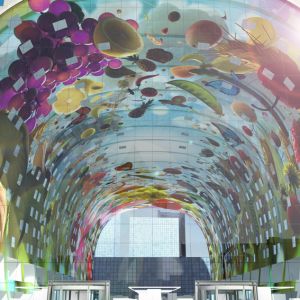
PimPalsgraaf vierkant_thumb.jpg)
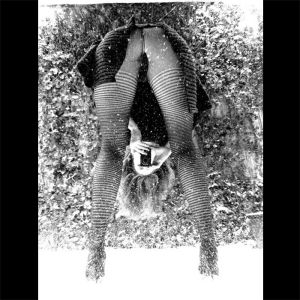
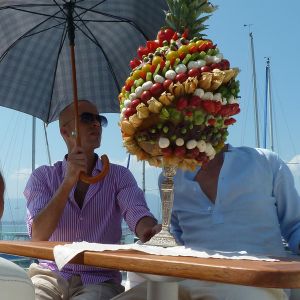
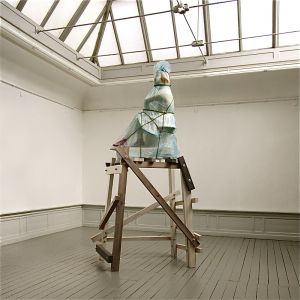
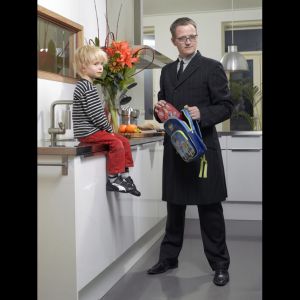
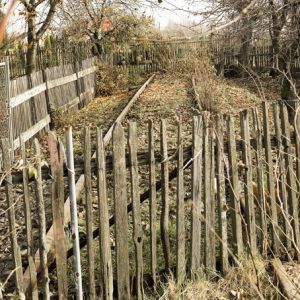
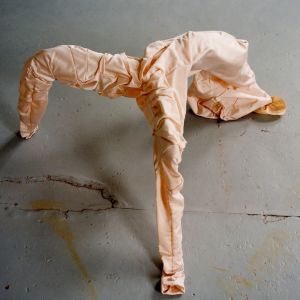
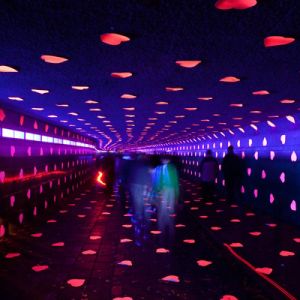
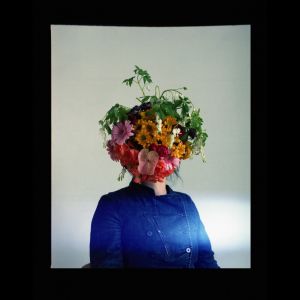
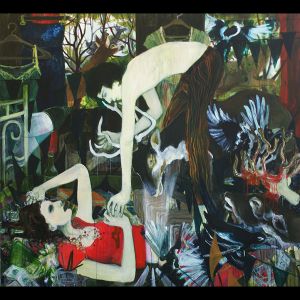
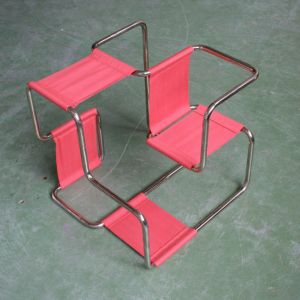
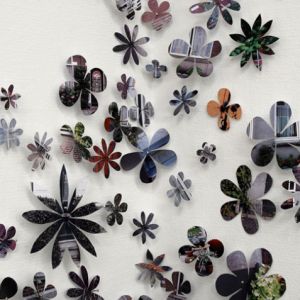
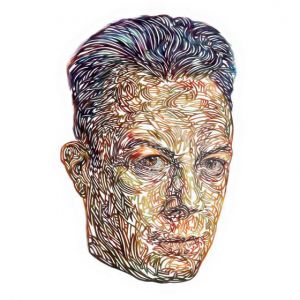
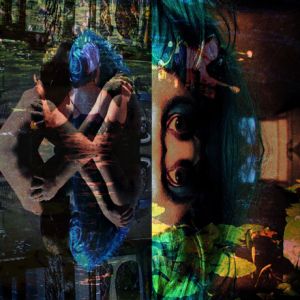
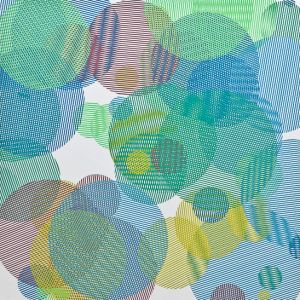
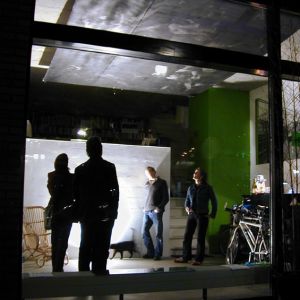
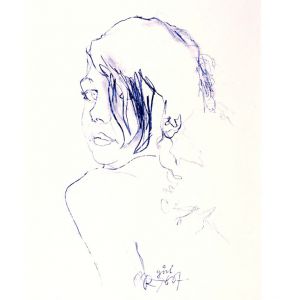
Olaf Moooij vierkant_thumb.jpg)
